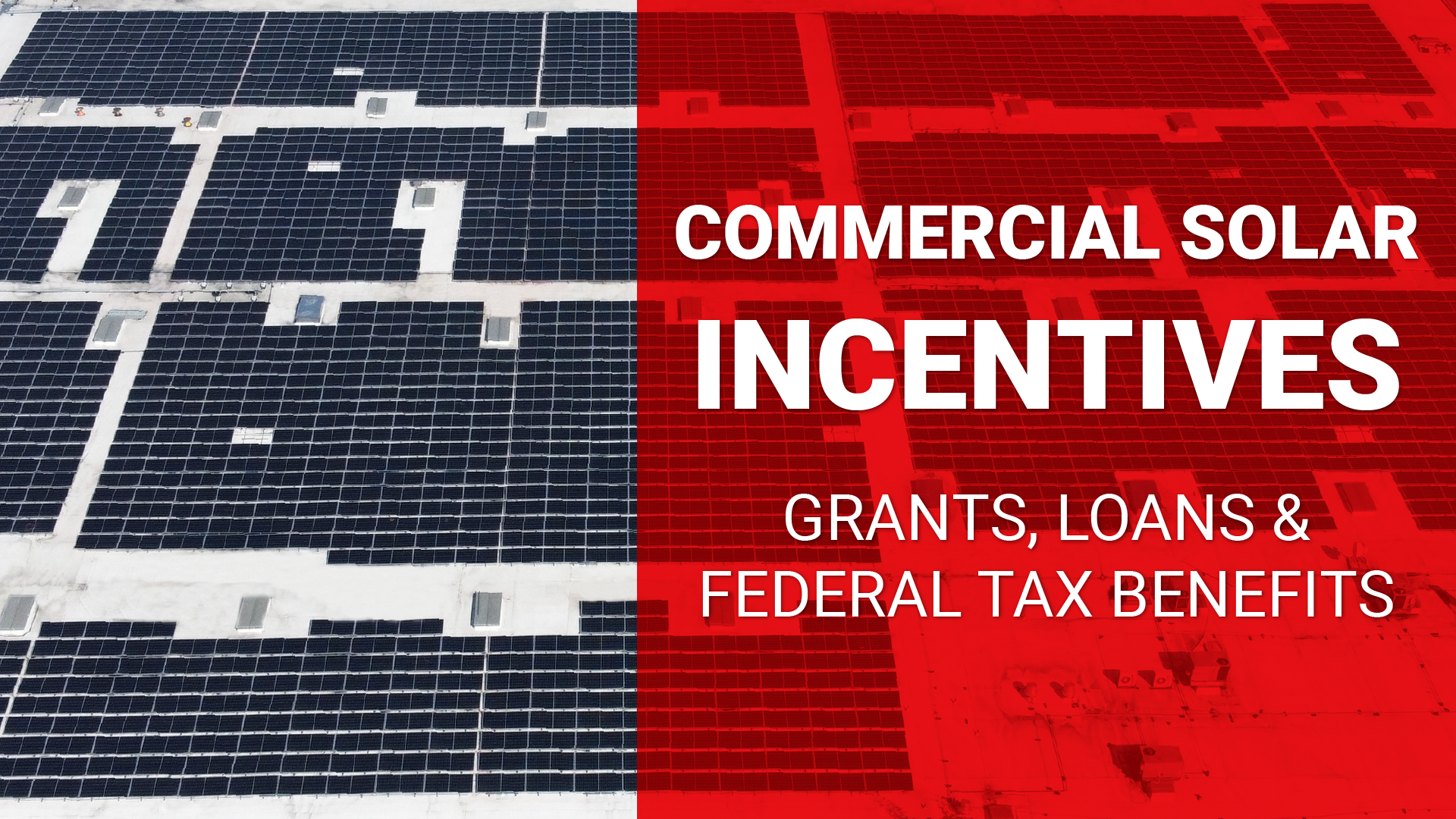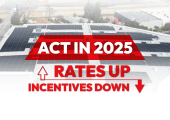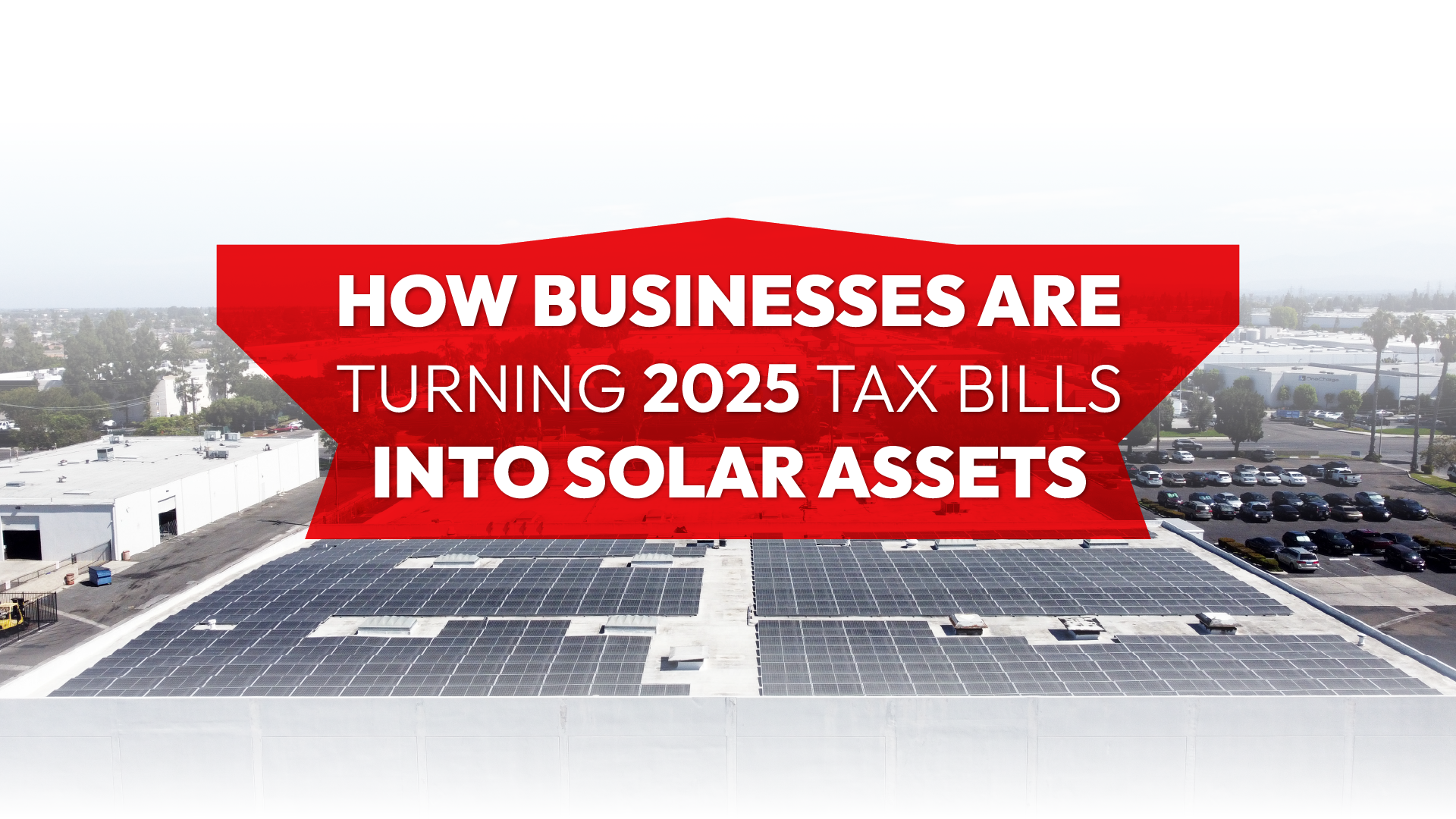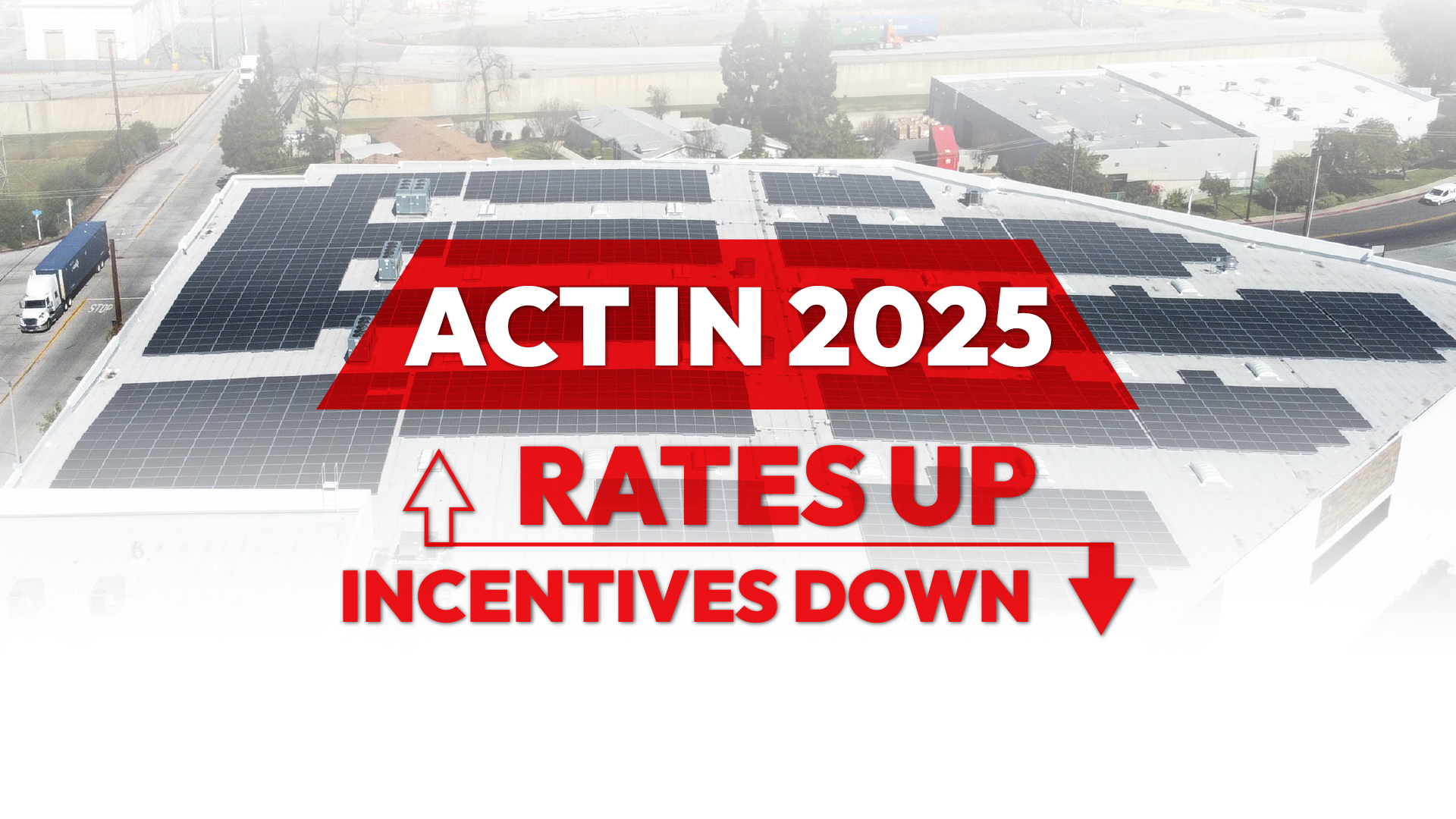Commercial Solar Incentives: Grants, Loans & Federal Tax Benefits
As energy costs rise and environmental concerns intensify, many U.S. businesses are turning to solar energy solutions to reduce expenses, increase sustainability, and gain a competitive advantage. However, the initial cost of solar panel installation for commercial properties can be a significant hurdle. That’s where commercial solar incentives come into play—making solar an attractive investment through a mix of grants, low-interest loans, and federal tax benefits.
Whether you’re in agriculture, manufacturing, warehousing, or run a nonprofit, this guide explores the top commercial solar government incentives, commercial solar loans, federal tax incentives for commercial solar, and commercial solar grants that business owners should know about in 2025.
Why Invest in Commercial Solar?
For business decision-makers, going solar in 2025 isn’t just about environmental stewardship – it’s a strategic financial move. Solar energy can substantially lower electricity bills and hedge against future utility rate hikes. Many companies report that solar installations pay for themselves within just a few years due to the stackable tax credits, rebates, and savings on energy costs.
By going solar, business owners can take advantage of:
- Reduced Energy Costs: Lower monthly electricity bills and protection against rising utility rates.
- Attractive Return on Investment (ROI): Financial gains realized through energy savings and incentives.
- Tax Advantages: Decreased federal income tax liability via tax credits and depreciation.
- Revenue Opportunities: Potential to sell surplus energy back to the grid through renewable energy credits (RECs).
- Enhanced Corporate Image: Appeal to environmentally conscious customers and investors.
The business case for solar has strengthened in recent years: hardware costs have dropped, and policies now allow incentives to cover a large portion of project expenses. Corporate leaders from retailers to tech firms are embracing solar as a cost-effective power solution; as noted, U.S. businesses now account for about 14% of all solar capacity in the nation.
Additionally, investing in on-site solar can improve a company’s sustainability profile and resilience. Solar combined with battery storage can keep critical operations running during grid outages, a growing concern for many industries. In short, going solar can reduce operating costs, enhance energy security, and demonstrate corporate leadership on climate — all while taking advantage of substantial government incentives that make solar more affordable than ever.
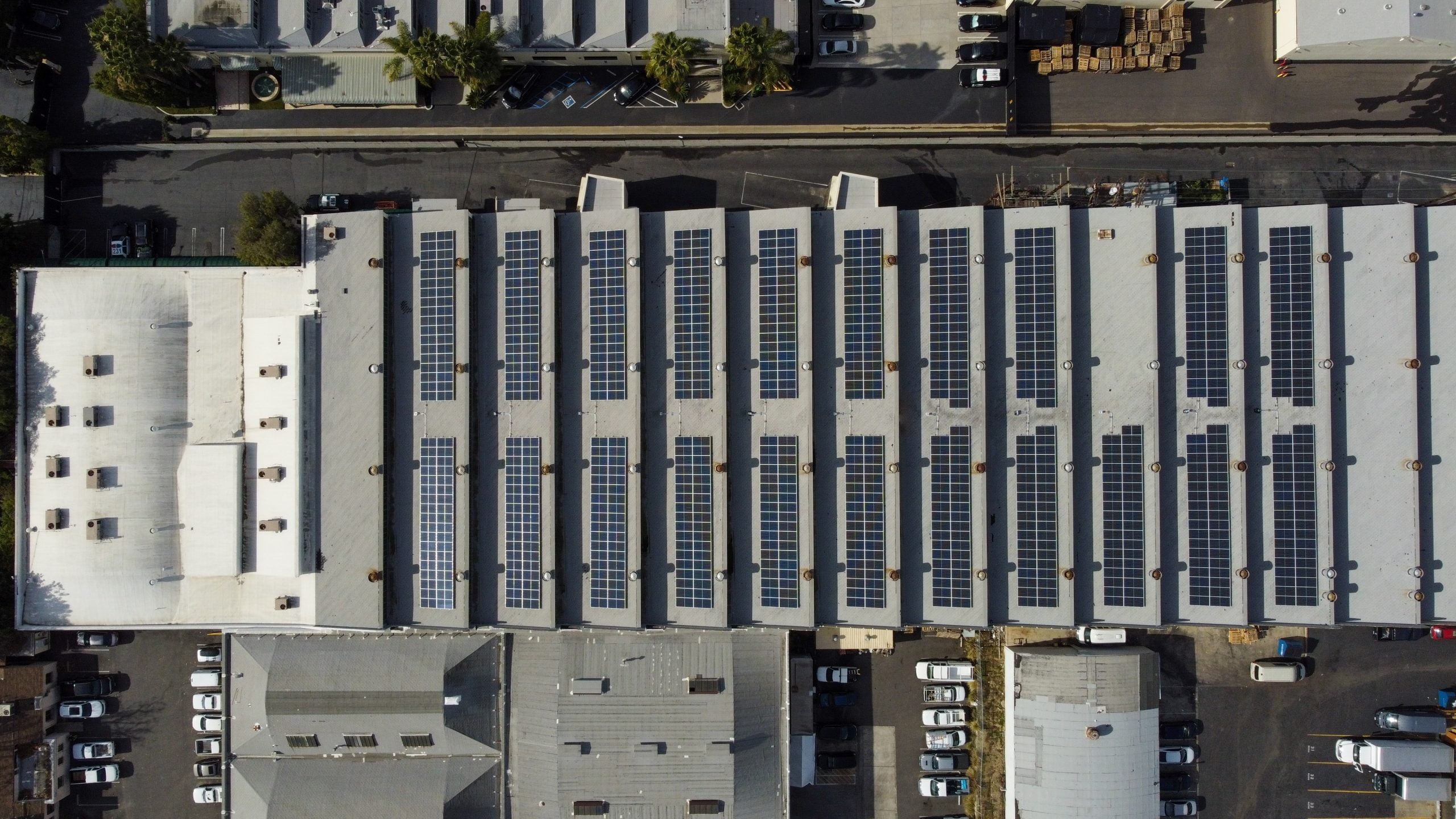
Key Federal Tax Incentives for Commercial Solar
Let’s start where the biggest savings often come from — federal tax incentives for commercial solar systems. These programs are designed to offset the upfront costs of solar adoption while rewarding businesses for making long-term energy-efficient improvements.
1. Federal Investment Tax Credit (ITC)
The solar investment tax credit, also known as the ITC, allows businesses to deduct 30% of the total installed cost of a solar PV system. Thanks to the IRA, this 30% rate is locked in for projects that begin construction by the end of 2032 (and enter service by 2025 or later). To qualify for the full 30%, projects larger than 1 megawatt must meet certain labor requirements – paying prevailing wages and using qualified apprentices – or else the credit is reduced by 80% (down to 6%).
Additional Bonuses:
- Energy Community Bonus: An extra 10% if your project is located in a qualified energy community, such as a region historically dependent on fossil fuels.
- Domestic Content Bonus: An additional 10% credit if your system uses a certain percentage of U.S.-manufactured products.
- Low-Income Community Bonus: Up to a 20% bonus if your project serves a low-income community or multifamily housing.
These bonuses can increase your total clean energy tax credit to as much as 50%, depending on eligibility.
2. Commercial Solar Grants
Commercial solar grants provide direct financial support to help cover the construction portion of your solar energy project. Programs like the USDA Rural Energy for America Program (REAP) are designed to support non-profit organizations, agricultural operations, and commercial properties in reducing their energy costs and carbon footprint.
Grants are typically awarded to cover a significant share of the total system cost and are often combined with other solar tax incentives and loans to further reduce your upfront investment.
Key Benefits:
- Covers up to 50% of eligible project costs, significantly reducing capital requirements.
- Requires a feasibility study or favorable feasibility assessment to confirm project viability.
- Includes technical assistance, completion documents, and support with project completion forms.
- Especially valuable for organizations serving low-income communities or providing critical services.
These solar power grants operate on a basis until funding is depleted, making early application and thorough documentation essential. It’s also good to know that combining them with the federal tax credit and depreciation can often make a solar project cash-flow positive in just a couple of years.
3. Commercial Solar Loans & Loan Guarantees
For businesses that prefer to finance their systems rather than pay upfront, there are a variety of commercial solar loans and loan guarantee programs available to reduce the initial cost of installation while enabling long-term energy savings.
These financing solutions are offered by federal agencies, state programs, and private-sector lenders, often with terms tailored to match your business’s cash flow.
Key Options:
- PACE Financing (Property Assessed Clean Energy): Allows repayment through your property tax bill, aligning with your monthly payments.
- DOE Loan Guarantee Program: Encourages private lenders to finance clean energy systems by backing loans with federal security.
- State-level financing programs like Wisconsin’s Focus on energy, offering low-interest loans and upfront incentives.
These programs can eliminate the need for an upfront payment, improve access to capital, and make solar more viable for a wide range of commercial projects, including community solar and solar energy property installations.
California-Specific Commercial Solar Incentives
California offers a variety of state-specific incentives and programs designed to support businesses in adopting solar energy solutions. These initiatives can significantly reduce the upfront costs and improve the return on investment for commercial solar projects.
1. Self-Generation Incentive Program (SGIP)
Administered by the California Public Utilities Commission (CPUC), SGIP provides financial incentives for the installation of new, qualifying self-generation equipment, including solar batteries and energy storage systems. This program is particularly beneficial for businesses looking to enhance their energy resilience and reduce demand charges.
2. Net Energy Metering (NEM) Programs
California’s NEM programs enable businesses with solar installations to receive credits on their utility bills for surplus energy fed back into the grid. Recent policy changes have adjusted the compensation rates and structures, emphasizing the importance of integrating energy storage solutions to maximize benefits under the current NEM framework.
3. Local Rebates and Incentives
Various local utilities and municipalities in California offer additional rebates and incentives for commercial solar installations. These programs can vary significantly by region and utility provider, so it’s advisable for businesses to consult with a knowledgeable solar provider like Revel Energy to identify and capitalize on these opportunities.
Tax Savings & Bonus Depreciation
Beyond tax credits and grants, commercial solar projects can deliver significant tax savings through accelerated depreciation. The federal government allows businesses to depreciate the cost of solar energy systems using two powerful tools: bonus depreciation and the Modified Accelerated Cost Recovery System (MACRS).
Bonus Depreciation
Under the Tax Cuts and Jobs Act (TCJA) of 2017, businesses were eligible for 100% bonus depreciation on qualified property placed in service between January 1, 2018, and December 31, 2022. Starting in 2023, this bonus depreciation percentage decreases by 20% each year: 80% in 2023, 60% in 2024, 40% in 2025, 20% in 2026, and is eliminated after 2026.
For solar energy property placed in service in 2025, businesses can immediately expense 40% of the depreciable basis in the first year, with the remaining value depreciated over subsequent years.
MACRS
Even if bonus depreciation isn’t fully utilized, the MACRS system allows for a 5-year depreciation schedule on commercial solar equipment. This depreciation applies to:
- Solar panels
- Inverters and batteries
- Mounting equipment
- Related professional services (engineering, design, permitting).
When you claim the ITC, you must reduce the depreciable basis by half of the credit (per IRS rules), meaning you can depreciate 85% of the project cost. For example, if a solar project has a depreciable basis of $1,000,000:
- Year 1: $400,000 (40% bonus depreciation)
- Years 2-6: The remaining $600,000 is depreciated over five years according to the MACRS percentages.
Combined Value
When used together with the solar investment tax credit, these depreciation tools can offset over half of a project’s cost in the first year alone—adding up to thousands of dollars in tax savings and helping businesses see a faster return on investment.

Performance-Based and Upfront Incentives
Beyond federal tax credits and grants, numerous states and utilities offer performance-based incentives (PBIs) and upfront incentives to encourage businesses to adopt solar energy solutions. These programs can significantly enhance the financial viability of commercial solar projects by providing ongoing payments based on energy production or reducing initial installation costs.
Performance-Based Incentives (PBIs)
PBIs compensate businesses based on the actual electricity their solar systems generate over time, typically offering payments per kilowatt-hour (kWh) produced. This approach ensures that incentives are directly tied to system performance, promoting optimal operation and maintenance.
Upfront Incentives
Some states and utilities offer rebates or cash incentives based on system size and projected performance. These incentives are often paid at the time of system commissioning, helping reduce the initial cost.
Examples include:
- Focus on Energy (Wisconsin)
- Self-Generation Incentive Program (SGIP) (California)
- Massachusetts SMART Program
- NYSERDA C&I Solar Incentives (New York)
These programs often work in conjunction with other financial tools like solar panel tax credits, loan guarantees, and renewable energy credits, further enhancing the financial benefits of your investment.
The Bottom Line: Maximize Your Commercial Solar ROI
Thanks to a growing list of commercial solar government incentives, solar is more accessible and affordable for businesses than ever before. Whether you choose to purchase your system, finance it through commercial solar loans, or enter into a power purchase agreement, today’s incentives offer a powerful way to cut energy costs and boost your bottom line.
With the right strategy, your business can:
- Secure thousands of dollars in solar tax incentives, grants, and bonus depreciation
- Lower your federal tax liability while investing in clean energy systems
- Generate long-term energy savings and environmental impact
- Participate in community solar or other shared energy programs
- Support workforce development through programs like the Clean Energy Internship Program.
However, to fully benefit from available incentives, meticulous compliance with program requirements and thorough documentation are essential. This includes maintaining records of prevailing wage payments, apprenticeship program participation, and adherence to specific labor requirements. That’s why working with an experienced solar service provider is key to getting the most out of your investment.
Partner with Revel Energy to Unlock Full Incentive Value
At Revel Energy, we specialize in helping commercial, industrial, and agricultural businesses transition to solar with confidence. From system design and financing options to handling every aspect of your incentive application and project completion, our experts are with you every step of the way.
We help you:
- Identify all relevant federal tax incentives for commercial solar
- Apply for commercial solar grants, loans, and solar financing
- Prepare necessary feasibility studies, completion documents, and compliance reports
- Customize your solar solution to align with your operations, goals, and budget
Whether you’re pursuing a large-scale rooftop solar project, a solar array for your farm, or looking to lower your operating costs through a power purchase agreement, Revel Energy is your trusted partner in maximizing the benefits of solar.
Take the next step toward energy independence!
Contact Revel Energy today for a free consultation and see how your business can save with commercial solar solutions backed by today’s most generous incentives.

Frequently Asked Questions (FAQ)
The most significant incentive is the Federal Investment Tax Credit (ITC), which allows businesses to deduct 30% of eligible project costs—including solar panel installation, design, equipment, and professional services—from their federal income tax liability. Projects may also qualify for additional bonuses such as the Energy Community Bonus, Domestic Content Bonus, and Low-Income Community Bonus, potentially raising the total clean energy credit to 50%.
Yes. Programs like the USDA REAP Grant provide solar power grants that can cover up to 50% of eligible project costs for non-profit organizations, farms, and rural businesses. These grants often include technical assistance, and require submission of feasibility studies, completion documents, and project completion forms.
Businesses can access low-interest loans and loan guarantees through federal, state, and private-sector programs. Key options include:
- PACE Financing, which aligns monthly payments with property tax bills
- DOE Loan Guarantee Program, which offers federal security backing
- State programs like Focus on Energy in Wisconsin that provide upfront incentives.
These financing options reduce or eliminate the need for an upfront payment, making solar a more accessible business expense.
Most programs require:
- A feasibility study or favorable feasibility assessment
- Detailed completion documents, including permits, inspections, and system specs
- Project completion forms to verify commissioning
- Proof of compliance with labor requirements, including apprenticeship requirements when applicable.
Yes. If ownership isn’t feasible, you can explore a Power Purchase Agreement (PPA) or join a community solar program. These models let you access clean solar electricity with no upfront investment by paying only for the power you use—making solar an attractive option for commercial renters and properties with space limitations.
- Performance-Based Incentives (PBIs) pay businesses based on how much solar electricity their systems generate over time.
- Upfront incentives are issued at commissioning and are typically based on system size and expected output.
These incentives can be layered on top of the solar investment tax credit and local renewable energy credits to enhance your project’s financial benefits.
Incentives are available to a wide range of organizations, including:
- Commercial properties and office buildings
- Industrial facilities
- Agricultural operations
- Nonprofit organizations.
Some programs prioritize projects in low-income communities or those delivering critical services, and others are limited to businesses with commercial systems meeting minimum capacity thresholds.
Commercial grade rooftop solar is ideal for: manufacturing, warehousing, logistics, industrial, retail, hospitality buildings and more with over 10,000 sq. ft. rooftops.
CARPORT SOLAR
Free standing carport solar generates added solar power for properties with limited rooftop space. Added benefits include shading and protection for employees vehicles.
Crucial for reducing peak demand charges. Automated to supply electricity when your panels won’t. Energy storage is ideal for businesses that incur significant peak charges.
As the popularity of electric vehicles increase, so does the demand for on-site charging. This sustainable amenity has become a parking lot fixture for competitive employers.
OUR SERVICES
TURNKEY COMMERCIAL GRADE SOLAR, ENERGY STORAGE, LED LIGHTING AND MORE.
PROFESSIONAL GUIDANCE
CUSTOM TAILORED PLANNING
CONSTRUCTION & INSTALLATION
CSLB #1106092
Client Testimonial: Kelemen Company
Corporate Business Park in Irvine, CA has created significant electricity cost savings through commercial solar installed across the 5-building business park.
Client Testimonial: Tice Gardner & Fujimoto LLP
See how this CPA firm saved on electricity and gained valuable tax credits through commercial solar that they used to keep cash in the businesses.

